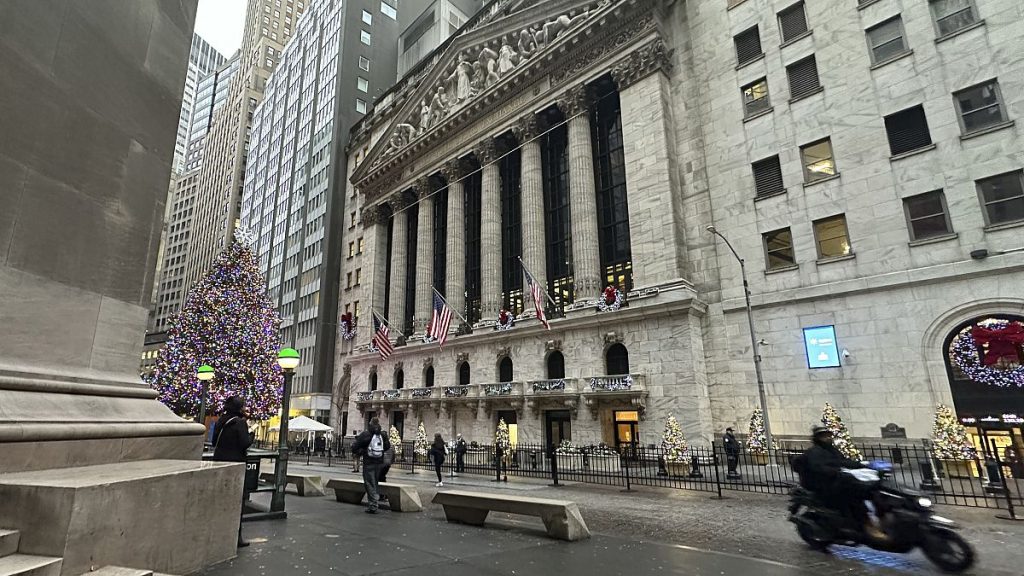The December Federal Reserve meeting triggered a significant market downturn, defying investor expectations for a more dovish outlook. The Fed delivered a 25-basis-point rate cut, bringing the target range to 4.25%-4.50%. However, accompanying economic projections signaled a more cautious approach to future rate cuts, anticipating only two additional cuts in 2025, a stark contrast to the four cuts projected in September. Federal Reserve Chair Jerome Powell reinforced this hawkish stance during the press conference, emphasizing the central bank’s cautious approach to further rate reductions and its proximity to a neutral interest rate level.
Powell’s comments fueled market anxieties, driving major stock indices significantly lower. The S&P 500 plunged 3.03%, the Nasdaq 100 sank 3.74%, and the Dow Jones dropped 2.54%, marking the steepest declines for the S&P 500 and Dow since September 2022. The market’s volatility index, the CBOE VIX, spiked nearly 60%, reflecting growing investor concern over the Fed’s less accommodative stance. The dollar surged to two-year highs against major currencies like the euro, while commodities like gold and silver experienced significant declines. Treasury yields also rose, with the 10-year Treasury yield reaching its highest level since late May.
The Fed’s shift in policy direction was primarily driven by upward revisions to inflation forecasts. The central bank now projects headline inflation to reach 2.5% in 2025, up from the previous 2.1% projection. Core inflation, excluding food and energy, is also expected to reach 2.5%, up from 2.2%. Powell reiterated the Fed’s commitment to achieving its 2% inflation target, acknowledging it might take “another year or two.” While not ruling out the possibility of future rate hikes, Powell emphasized the Fed’s data-driven approach and its focus on further progress on inflation and continued strength in the labor market.
Powell highlighted the resilience of the US economy, contrasting its performance with the struggles faced by global peers grappling with sluggish growth and high inflation. He dismissed concerns about an imminent recession, pointing to the consistent failure of slowdown predictions. Powell also addressed questions regarding potential fiscal risks under a potential Trump administration and the inflationary impact of tariffs. While refraining from making assumptions, he acknowledged the Fed’s close monitoring of these developments. This cautious optimism, coupled with concerns over inflation, underscores the Fed’s complex balancing act.
The market reaction to the Fed’s announcements was swift and pronounced. The dollar’s surge reflected increased investor confidence in the US economy relative to other major economies, while the decline in equities signaled investor concern about the potential impact of sustained higher interest rates on corporate earnings and economic growth. The rise in Treasury yields reflected the market’s reassessment of future interest rate expectations, factoring in the Fed’s less dovish outlook. The overall market rout signaled a shift in investor sentiment, moving away from the anticipation of aggressive rate cuts towards a more cautious and uncertain outlook.
Finally, Powell addressed speculation surrounding the potential role of Bitcoin and cryptocurrencies within the US financial system. He explicitly rejected the notion of a government-backed Bitcoin reserve, citing legal constraints under the Federal Reserve Act and clarifying the Fed’s lack of intention to pursue changes to the law. This statement contributed to a further decline in Bitcoin’s price, highlighting the regulatory uncertainty and lack of official endorsement that continues to weigh on the cryptocurrency market. Powell’s comments underscore the current regulatory stance towards cryptocurrencies and the limited likelihood of their integration into the traditional financial system in the near future.














